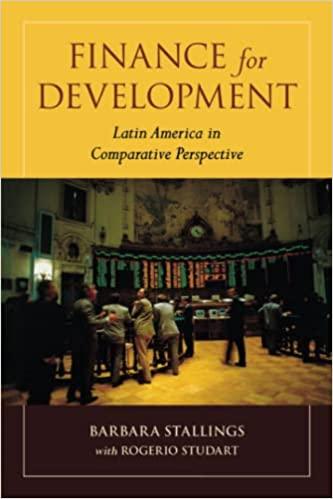Question
QUESTION 7 10 marks a) Kahn and Rudd (1995) examined whether historical performance predicts future performance for a sample of mutual funds that included 300
QUESTION 7 10 marks a) Kahn and Rudd (1995) examined whether historical performance predicts future performance for a sample of mutual funds that included 300 actively managed U.S. domestic equity funds. One approach they used involved calculating each funds exposure to a set of style indexes (the term style captures the distinctions of growth/value and large-capitalisation/mid-capitalisation/small-capitalisation). After establishing a style benchmark (a comparison portfolio marched to the funds style) for each fund, Kahn and Rudd computed the funds selection return for two periods. They defined selection return as fund return minus the funds style-benchmark return. The first period was October 1990 to March 1992. The top 50 percent of funds by selection return for that period were labelled winners; the bottom 50 percent were labelled losers. Based on selection return in the next period, April 1992 to September 1993, the top 50 percent of funds were tagged as winners and the bottom 50 percent as losers for that period. An excerpt from their results is given in following table. The winner-winner entry, for example, shows that 70 of the 150 first-period winners fund were also winners in the second period (52.7%= 79/150). Note that the dour entries in parentheses in the table can be viewed as conditional probabilities. Based on the four events needed to define the four conditional probabilities. State the four entries of the table as conditional probabilities using the form P(this event | that event) = number Are the conditional probabilities in Part 2 empirical, a priori, or subjective probabilities? Using the information in the table, calculate the probability of the event a fund is a loser in both Period 1 and Period 2. (Note that because 50 percent of funds are categorised as loser in each period, the unconditional probability that a fund is labelled a loser in either period is 0.5) b) You have a portfolio of two mutual funds, A and B, 75 percent invested in A, as shown in following table: 1. Calculate the expected return of the portfolio. Calculate the correlation matrix for this problem. Carry out the answer to two decimal places. 2.1Compute portfolio standard deviation of return.
Step by Step Solution
There are 3 Steps involved in it
Step: 1

Get Instant Access to Expert-Tailored Solutions
See step-by-step solutions with expert insights and AI powered tools for academic success
Step: 2

Step: 3

Ace Your Homework with AI
Get the answers you need in no time with our AI-driven, step-by-step assistance
Get Started


